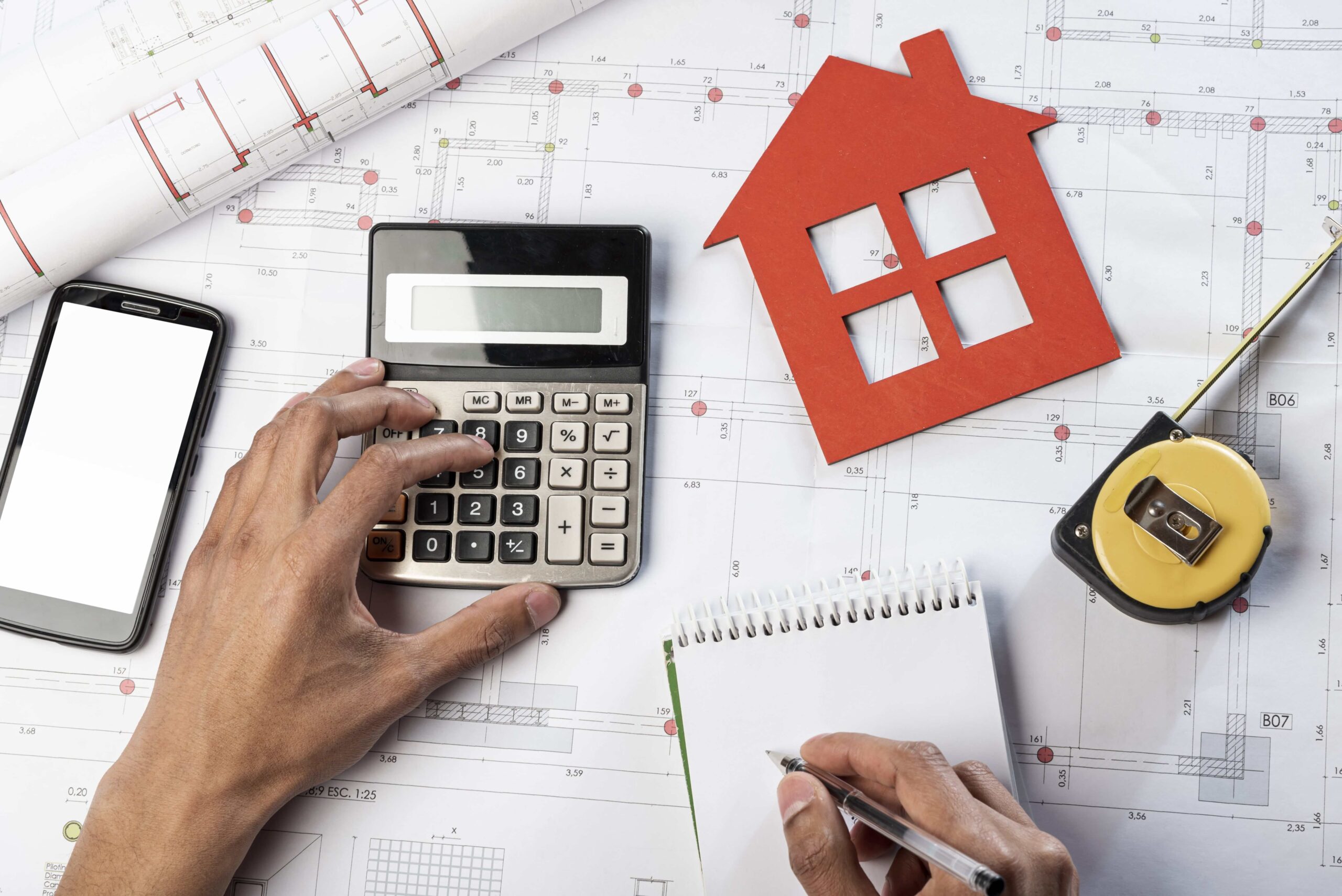Top Real Estate Trends in Mumbai 2023: Dominating the Market Landscape
Real estate, an ever-evolving domain, has undergone countless transformations over the years. As 2023 unfolds, we’re witnessing groundbreaking shifts in the market, shaping the future for developers, investors, and homebuyers alike. Dive into our comprehensive analysis to stay abreast of this year’s most pivotal real estate trends.1. Sustainable and Eco-Friendly Developments
Embracing Green Living
The surge of environmental awareness has molded a new era of construction. Buildings with lower carbon footprints, energy-efficient infrastructures, and green rooftops aren’t just buzzwords; they’re a cornerstone of the modern architectural paradigm.- Urban Forests: Many real estate projects now feature vast green spaces, aiming to combat urban heat and boost mental well-being.
- Eco-Materials: Sustainable materials are at the forefront from bamboo flooring to recycled metal infrastructures.
2. Smart Homes & Technological Integration
The Rise of Intelligent Living
 The concept of smart homes has transitioned from luxury to necessity. Integrating AI, IoT, and advanced home automation systems ensures enhanced living standards and security.
The concept of smart homes has transitioned from luxury to necessity. Integrating AI, IoT, and advanced home automation systems ensures enhanced living standards and security.- Voice-Controlled Systems: With the integration of AI assistants, homeowners can now control lighting, heating, and security systems with simple voice commands.
- Advanced Security Systems: Biometric accesses, facial recognition, and IoT-enabled alarms are now standard in modern homes.
This shift towards smart living is redefining residential standards, ensuring that homes are not only places of comfort but also hubs of technology-driven efficiency and security.
For those interested in experiencing this blend of luxury and smart technology in Mumbai, exploring
3 BHK flats in South Mumbai at Salsette27 can provide a glimpse into the future of residential living.
3. Flexible Workspaces within Residential Zones
Adapting to the New Normal
The pandemic-induced remote working culture has birthed the demand for flexible workspaces within residential areas. Homebuyers prioritize properties that accommodate both living and working environments.- Workspace Amenities: Soundproof rooms, high-speed internet facilities, and ergonomic furniture are gaining prominence.
- Community Work Zones: Shared workspaces within residential complexes facilitate networking and collaboration.
4. Urbanization of Suburbs
The Appeal of Spacious Living
While city centers were once the epicenter of demand, suburban areas are witnessing unprecedented growth. The quest for spacious living, coupled with affordable rates, is driving many to the outskirts.- Infrastructure Development: Rapid transit systems, schools, and healthcare facilities are sprouting in suburban zones.
- Mixed-Use Projects: Suburbs now feature a blend of residential, commercial, and recreational spaces, ensuring residents don’t feel isolated.
5. Virtual Property Tours & Digital Transactions
Reshaping Property Experiences
 Digital transformation isn’t limited to the tech sector. Real estate embraces virtual property tours, ensuring potential buyers can explore properties from their homes.
Digital transformation isn’t limited to the tech sector. Real estate embraces virtual property tours, ensuring potential buyers can explore properties from their homes.- AR & VR: Augmented and Virtual Reality tools offer immersive property walkthroughs, amplifying the remote viewing experience.
- Blockchain in Real Estate: With blockchain technology, property transactions are becoming more transparent, secure, and efficient.
Conclusion: Preparing for Tomorrow
As we navigate through 2023, understanding these real estate trends becomes paramount for making informed decisions. Whether you’re an investor, a developer, or a homebuyer, aligning with these evolving patterns ensures that you stay ahead in the property game. Embrace the future, for it is replete with opportunities waiting to be seized. Future Real Estate Trends in Mumbai Mumbai, often referred to as the financial capital of India, has been experiencing rapid growth in its real estate sector. With a booming economy and a growing population, the demand for residential and commercial spaces has been on the rise. In this article, we will explore the current real estate landscape in Mumbai and discuss the key factors influencing its market. We will also delve into predicted changes in residential real estate, commercial real estate trends to watch, the impact of technology, and the push for sustainability in real estate development.
Understanding the Current Real Estate Landscape in Mumbai Mumbai’s real estate market has been witnessing notable growth over the past couple of decades. The city’s limited land availability and high population density have led to soaring property prices. Developers have been focusing on creating vertical structures and high-rise buildings to meet the increasing demand for housing and commercial spaces. However, the market has also faced challenges, such as slow infrastructure development and regulatory hurdles. These factors have caused fluctuations in property prices and affected the overall investor sentiment in the market. Despite these challenges, Mumbai’s real estate market continues to thrive due to several key factors that influence its dynamics. Key Factors Influencing Mumbai’s Real Estate Market Firstly, the city’s economic growth and job opportunities attract a large influx of people from different parts of the country. Mumbai has long been considered the financial capital of India, with numerous multinational corporations and financial institutions having their headquarters here. This constant migration has created a continuous demand for housing and has been a major driver of the real estate market. Secondly, the scarcity of land has led to developers focusing on redevelopment and slum rehabilitation projects. Mumbai is known for its sprawling slums, and the government has been actively involved in initiatives to transform these areas into affordable housing complexes. These initiatives aim to provide affordable housing to the lower-income groups and also contribute to the overall development of the city. Furthermore, Mumbai’s geographical constraints and limited supply of developable land have resulted in high property prices. The city is surrounded by water on three sides, leaving limited space for expansion. The cost of land and construction, along with high taxes and other associated expenses, have a significant impact on the final purchase price for homebuyers and investors. Additionally, the city’s infrastructure development has been relatively slow compared to the pace of real estate growth. The lack of adequate transportation, including roads, bridges, and public transportation, has been a major concern for residents and investors alike. However, the government has been taking steps to address these issues and improve the overall infrastructure of the city. The Role of Government Policies The government plays a crucial role in shaping Mumbai’s real estate market through various policies and regulations. Policies such as the implementation of the Real Estate Regulatory Authority (RERA) have brought transparency and accountability to the sector. RERA ensures that developers adhere to timelines, quality standards, and fair pricing, providing buyers with increased confidence. In addition to RERA, the government has also introduced schemes like Pradhan Mantri Awas Yojana (PMAY) to promote affordable housing. These initiatives aim to provide subsidized housing loans, tax benefits, and interest subsidies to first-time homebuyers and economically weaker sections of society. Such schemes have made homeownership more accessible to a wider range of individuals and have contributed to the overall growth of the real estate market. Furthermore, the government has been actively involved in promoting sustainable and environmentally friendly development practices. Initiatives such as the Green Building Certification have encouraged developers to incorporate energy-efficient and eco-friendly features in their projects. This not only benefits the environment but also enhances the overall quality of life for residents. In conclusion, Mumbai’s real estate market is a dynamic and ever-evolving landscape. While it faces challenges such as limited land availability and slow infrastructure development, the city continues to attract investors and homebuyers due to its economic growth, job opportunities, and government initiatives.
As the market continues to grow, it is essential for stakeholders to adapt to changing trends and regulations to ensure sustainable and inclusive development. Predicted Changes in Residential Real Estate The residential real estate segment in Mumbai is expected to witness some significant changes in the coming years. Two major trends to watch out for are the shift towards affordable housing and the rise of luxury apartments. Shift Towards Affordable Housing Addressing the housing needs of the masses has become a priority for the government and developers alike. With the aim of making homeownership more accessible, developers are focusing on the construction of affordable housing units. These projects cater to the needs of middle-income groups and offer budget-friendly homes with basic amenities. The availability of housing finance options at affordable interest rates has further facilitated the affordability of these units. Increased government efforts and incentives to promote such projects have resulted in a surge in their demand. The Rise of Luxury Apartments On the other end of the spectrum, luxury apartments have gained popularity among affluent buyers in Mumbai. These apartments offer top-of-the-line amenities, high-end specifications, and a luxurious lifestyle. Developers are incorporating elements of opulence and exclusivity in their projects to cater to this niche market segment. The demand for luxury apartments has been fueled by factors such as increasing disposable incomes, aspirations for a higher standard of living, and the desire for a prestigious address. With Mumbai being one of the prime cities for luxury real estate, developers are constantly innovating to offer unique and luxurious experiences to buyers. It’s crucial to understand what to look for in these high-end properties. To ensure a wise decision when purchasing luxury real estate in Mumbai, read essential
tips on what to check before buying a flat in this vibrant city.
Commercial Real Estate Trends to Watch Mumbai’s commercial real estate sector has also witnessed significant growth, driven by the city’s thriving business environment. Two noteworthy trends to watch in this sector are the growing demand for office spaces and the evolving retail and hospitality real estate outlook. The Growing Demand for Office Spaces Mumbai has emerged as a hub for various industries, including finance, IT, and entertainment. The city’s business-friendly policies, availability of skilled manpower, and excellent connectivity have attracted both domestic and international companies to set up their offices here. This surge in demand for office spaces has led to the development of commercial complexes and business parks across the city. Developers are focusing on providing state-of-the-art office spaces that are equipped with modern amenities, efficient layouts, and flexible configurations to meet the diverse requirements of businesses. Retail and Hospitality Real Estate Outlook Mumbai’s retail and hospitality sectors have also been witnessing notable growth. With the rise in consumer spending power and changing lifestyles, the demand for retail spaces and entertainment venues has increased. Developers are investing in the construction of shopping malls, multiplexes, and leisure centers to cater to this demand. The hospitality sector in Mumbai has also witnessed significant growth in recent years. The city attracts a large number of domestic and international tourists, resulting in a surge in demand for hotels and resorts. Developers are capitalizing on this opportunity by constructing luxury hotels and serviced apartments that cater to the needs of business travelers and tourists alike. The Impact of Technology on Mumbai’s Real Estate Technology has played a transformative role in Mumbai’s real estate sector. Two areas where technology is revolutionizing the industry are the use of proptech in real estate transactions and the adoption of virtual reality in real estate marketing. The Role of Proptech in Real Estate Transactions Proptech, or property technology, has transformed the way real estate transactions are conducted. Digital platforms and mobile applications have made property search, buying, and selling more convenient and transparent. Buyers can now explore property listings, compare prices, and even virtually tour properties from the comfort of their homes. Proptech also offers solutions for property management, tenant screening, and documentation. These innovations have streamlined processes, reduced paperwork, and improved the overall efficiency of real estate transactions. Mumbai’s real estate market has embraced proptech, making property transactions faster and more accessible. How Virtual Reality is Changing Real Estate Marketing Virtual reality (VR) has emerged as a game-changer in real estate marketing. Developers are using VR technology to create immersive experiences for potential buyers. Virtual tours of properties allow buyers to get a realistic feel of the space without physically visiting the site. VR also offers the ability to showcase upcoming projects and provide a glimpse of the completed development. This technology enhances the marketing efforts of developers by allowing them to showcase their properties in a visually captivating and interactive manner. Mumbai’s real estate industry has capitalized on VR to attract buyers and investors, making the marketing process more engaging and effective. Sustainability and Real Estate Development In recent years, sustainability has become a significant focus in real estate development worldwide, and Mumbai is no exception. The push for green buildings and the impact of urban planning on sustainability have gained prominence in the city’s real estate sector. The Push for Green Buildings Developers are increasingly incorporating sustainable practices in their projects. Green buildings are designed to minimize resource consumption, reduce carbon emissions, and promote a healthier living environment. Mumbai’s real estate market has witnessed the construction of several green buildings, which have received certifications such as Leadership in Energy and Environmental Design (LEED). These buildings utilize renewable energy sources, implement efficient waste management systems, and focus on water conservation. The demand for green buildings is driven by the increased awareness of environmental issues and the desire for energy-efficient and eco-friendly living spaces. The Impact of Urban Planning on Sustainability Mumbai’s urban planning plays a crucial role in creating sustainable neighborhoods and communities. Well-planned infrastructure, efficient public transportation systems, and the development of green spaces contribute to the overall sustainability of the city. The government has been focusing on initiatives such as urban renewal projects, smart city development, and improving connectivity through metro rail networks. These efforts aim to create a sustainable urban environment that prioritizes the well-being of its residents and reduces the carbon footprint of the city. In conclusion, Mumbai’s real estate market is set to witness several trends in the coming years. The city’s growing population, government policies, and economic prospects will continue to shape the demand for residential and commercial spaces. As technology advances, prop-tech and virtual reality will redefine the real estate transaction process and marketing strategies. Additionally, sustainability will play a crucial role in future real estate development, with a focus on green buildings and urban planning. The dynamic nature of Mumbai’s real estate sector presents both challenges and opportunities, making it an exciting market to watch in the future.












 Carpet area
Carpet area



